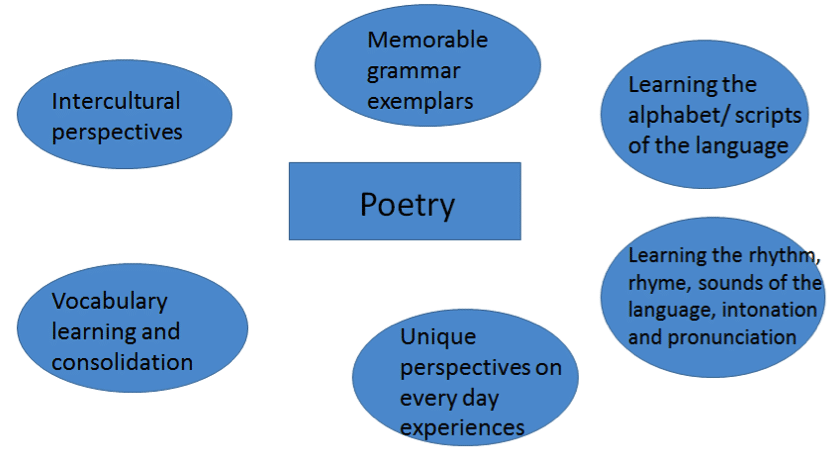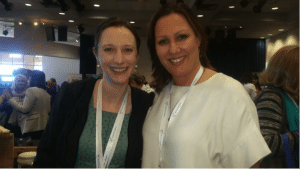by Natalie Pearce
At the opening Keith Horwood lecture John Hajek acknowledged some of the key challenges facing Languages teachers such as the Monolingual mindset, Anglobubble, lack of strong Languages policy and the high attrition rate of students studying Languages. He encouraged Languages educators and activists to ‘DECODE’ which represents the acronym below:
Demand – High quality Language education for all students
Explain – the benefits of Language learning and address the concerns (eg that Language learning takes away from English literacy time, that Languages aren’t assessed in NAPLAN and therefore less valuable)
Capacity – be able to provide programs for proficiency in the languages being learnt
Opportunity – insist that students have the opportunity to use their language knowledge (eg campaign for more TV programs in Languages other than English)
Desire– Generate and support a desire in our students and the wider community for learning Languages
Evaluate – assess the beffectiveness of Languages programs
Other strategies that he recommended were using humour and popular culture to our advantage. He referred to Masha and the bear – A recipe for disaster which is a Russian cartoon and the most watched non music Youtube clip in the world. Eg I showed it to my own 6 and 8 year old kids and they were hooked straight away. I have been thinking about ways that we might be able to use clips from the Masha series as texts in my Languages classes. You can see the video from this link here:
https://www.youtube.com/watch?v=KYniUCGPGLs
Nina Spada
Attention to form and corrective feedback is very important for students to develop their Language skills. We mustn’t abandon these in immersion style or CLIL programs. I was also really interested in how she spoke of the fact that recalling of grammar and vocabulary is often tied to our experience of learning it. Therefore I’m challenged to think how I can optimise the environment in my classrooms for students to be learning Language that is going to stick in their minds.
Kylie Farmer ELLA
This session introduced us to the Early years Languages Learning App which is being used in many Kindergarten and Childcare centres across Australia. It has been funded by the federal government and so is free for all schools to access. I had had my doubts about how an Ipad app could be play based but was pleasantly surprised to see children using the ELLA app in carefully setup play spaces that related to the content they were working with. I was also impressed to see that educators are encouraged to create real cultural experienced to supplement the apps.
More information on how schools can apply to be part of ELLA and eligibility requirements can be found here:
A one minute promotional video can be found here:
http://www.polyglotsvideos.edu.au/language-culture-understanding-ELLA.html
They have made a demonstration family app which can be downloaded for free from Itunes. If you want to see ELLA in action here is the link to the Japanese version:
https://itunes.apple.com/au/app/ella-family-app-japanese/id1131142857?mt=8#
Letting Go of Silence: Tilka Brown from The Language Toolbox
Tilka Brown discussed the importance of communication between Language teachers and classroom teachers, between students and between teachers and students. Tilka also outlined some of the benefits for implementing CLIL programs in primary schools. Many of her ideas can be found in this article that you can access below.
http://clil.loescher.it/terrific-tools-for-language-teaching.n3955
Critical Thinking: Holger Nord
This session was more philosophical that practical and perhaps more about encouraging educators to ask questions more than it provided answers. These two video resources were shared during this session and may be of interest to other Languages teachers :
A series of untranslatable words about love short video which would be good for starting a discussion about how when we learn a new language we start to view the world in a different way. Could also be useful for discussing how Google translate has its limitations.
A French election advertisement with children playing Monopoly with ‘creative rules’ which highlights inequalities in French society. This video could be used to start a discussion about social issues.
STEM, STEAM and Languages: Antonella Macchia
This workshop outlined some CLIL programs which are being developed in the area of STEM (Science Technology Engineering Maths) and STEAM (Arts is included). What I found so interesting was the focus on incorporating Critical and creative Thinking. Here is the Critical and creative thinking continuum from the Australian Curriculum which was shared with us by in the workshop. Critical and creative thinking is one of the seven General Capabilities from the Australian Curriculum.
More information on Critical and Creative thinking and its application in teaching and learning programs can be found here. There are examples of it being implemented in Mathematics, English, Science and History. Would be great to see some Languages examples too.
Using poetry and all the senses to teach Languages: Natalie Pearce and Junko Nichols
Why poetry? Because it stimulates, wakes us up to see things in new ways, hear things in new ways, think of things in new ways…To remember something, we need to be surprised by an odd idea or use of words. It’s how children learn many things in their first language Jim Scrivener
I was priviledged to receive a generous grant from the MLTAWA to attend and present this session at the conference on using poems and multisensory activities to teach Languages. With the inclusion of the Creating substrand in the Australian and WA Languages Curriculums there has been a growing interest in using creative texts. Junko Nichols who is a Languages Consultant in NSW and myself developed this presentation to outline the benefits to be had from using poetry and ideas of how poems can be used for planning one of lessons or integrated units of work. Benefits from the literature and that we have also experienced with our students include Intercultural viewpoints, that poems are ideal to dramatise and memorise by heart thus helping vocabulary acquisition and providing grammar exemplars and that they can speak to the heart and allow us to see things from a different viewpoint. Every year Harmony Day and UNESCO’s World Poetry Day are held on the 21st of March and this year on this day all of our students from Year 1 to 6 participated in workshops where they learnt a Japanese poem that had a harmony theme integrated with a hands on activity. This day was a great success. There was an academic from New Zealand who attended our session at the conference and we are at the moment writing up an article exploring what the literature says on the potential benefits of using poetry for Language learning along with our experiences.
Japanese teachers who are looking poems written by Japanese children can find them here:
Here are two advertisements with poems which were dramatized at public broadcasting announcements in the wake of the Great East Disaster in Japan.
This poem is by Miyazawa Kenji:
https://www.youtube.com/watch?v=fkEdeBFMEHM
And this poem by Kaneko Misuzu:
https://www.youtube.com/watch?v=A7g9q2NI5WE
Many poems which have been written by Japanese children and published in a popular newspaper column called ‘Kodomo no shi’ have been archived here:
https://matome.naver.jp/odai/2126527477307612501

About Natalie Pearce
Japanese Teacher- Lake Joondalup Baptist College/Beechboro Christian School

Natalie Pearce and President Kate Reitzenstein
Natalie is a passionate primary school Japanese teacher. Her 12 years of experience teaching Languages also includes Indonesian and English as a Second Language.
Natalie has a special interest in teaching Languages to young children from 5 years old through play based learning. She has worked as a Curriculum Consultant in Western Australia, which involved developing Languages documents, and has also lectured in Languages teaching methodology at Curtin University. Natalie has presented extensively in Australia on a wide range of topics associated with the teaching and learning of Languages. She aims to use creative and dynamic activities to instil in her students a love of the Japanese language and a lifelong love of learning Languages. She was honoured to be awarded the JLTAWA Japanese Teacher Award for 2016.

